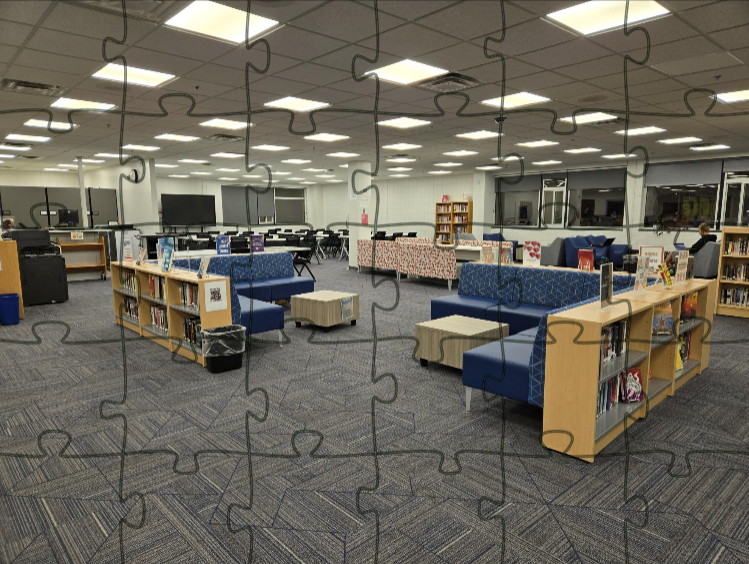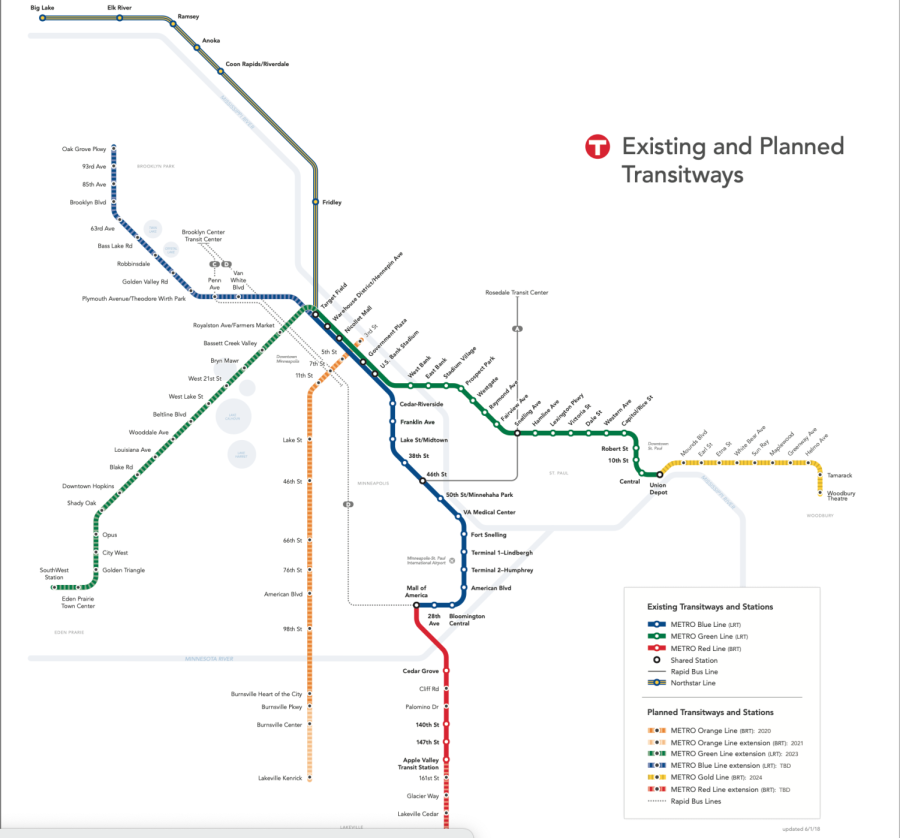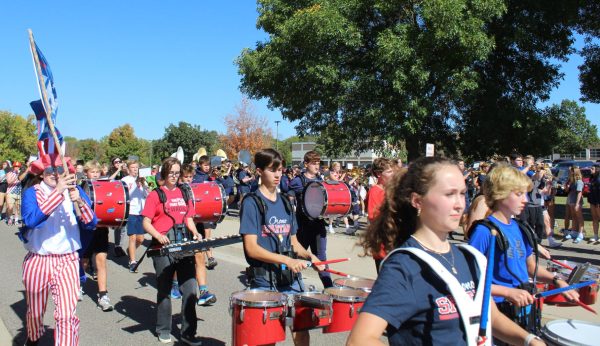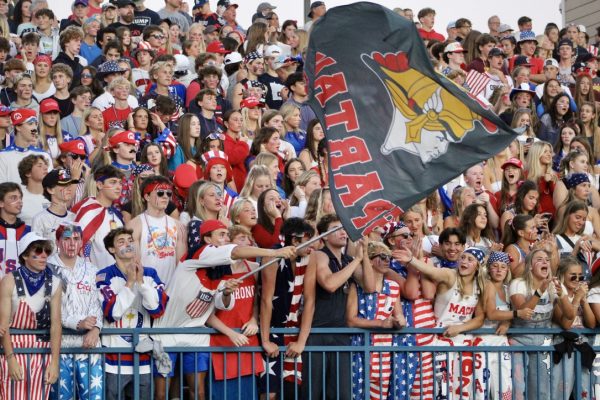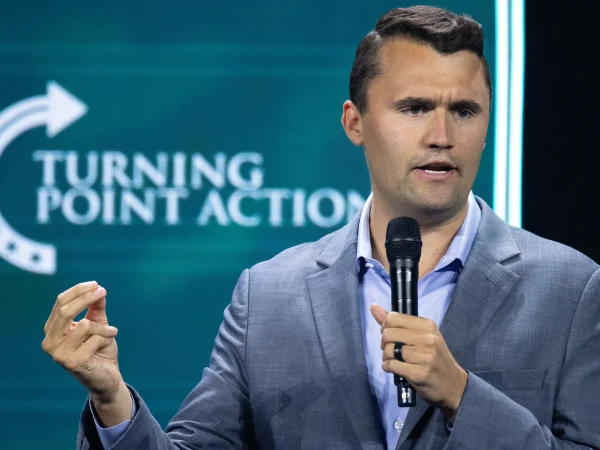Light Rail Transit Speeding Up Transportation in the City
https://www.metrotransit.org/Data/Sites/1/media/metro/transitways_diagrammap.pdf
The Minnesota Light Rail Transit’s current and future transitways. Connecting residents within the Twin Cities and reaching outward into communities outside of the cities.
Expansion to the Minnesota Light Rail has become a contentious subject in the Twin Cities community. The Light Rail is an affordable and accessible mode of transportation for thousands of residents in the metropolitan area, however, the cost of expansion has many residents concerned regarding the financial toll on the city and the potential spike in rent and fare fees.
According to METRO Transit, the Light Rail System, being the METRO Blue and Metro Green Line (Southwest light rail project (SWLRT)), together link downtown Minneapolis, Bloomington, the University of Minnesota, and downtown St. Paul; along with various communities outside of the cities.
“[The Light Rail] is a large investment in the community, and costs will continue to rise the longer the delay in funding and other financial support mechanisms…if we want to attract new, bright, talent to our Minnesota businesses we need to offer similar, or better, transportation options to that of other vibrant cities where we are competing for those same employees,” Twin Cities resident Marnie O’Byrne said.
The initial proposal of the METRO Green Line expansion was approved at a far lower price, but with continuous changes in construction. According to the Metropolitan Council, the Light Rail is estimated to cost between $450 million and $550 million. This major increase in construction cost has led many residents to feel worried that their rent will spike.
“I personally find it hard to rationalize the benefits of the line against the tremendously high price tag for the project…I think the line will be an overall net positive for the community, but I can’t help but wonder how much more good could have been done with that money,” architect Joseph Conway said.
The vast area that the Light Rail travels creates simpler transportation for residents in the metro. The fares for the Light Rail average $2.00-2.50, making transportation fairly affordable. The extension will also make transportation more accessible to residents commuting from outside the cities, in part by expanding the distance of which the Light Rail will reach beyond the Twin Cities.
The proposed METRO Blue Line Extension project will bring Light Rail Transit to the NorthWest communities of Minneapolis-St. Paul. According to the city of Brooklyn Park, the new Light Rail expansion will carry, on average, 27,000 riders daily by 2030, which will be beneficial to many residents.
“The Twin Cities at large are currently facing a severe housing shortage. In order to protect the people in our community from rapid increases in rent, more housing needs to be built, particularly in areas with high demand. Light rail has the benefit of suddenly making underutilized properties along its routes, like dilapidated industrial buildings, desirable for housing and other community-centric uses,” Conway said.
Residents in lower-income communities fear that the new Light Rail extension will negatively affect their quality of life, as well as their finances. The expansion of the Light Rail line has made real estate more desirable by investors, leading to gentrification in many neighborhoods in Minneapolis and St. Paul.
According to the Sahan Journal, in many low-income communities, residents have been seeing changes in their communities; and some neighborhood associations have heard from residents who are seeing their monthly rents increase as much as $200.
“I live in Midtown and the rent has gone up over the years as more people move into the city because of the easier commutes,” Twin Cities resident Jayson Douglas said.
In contrast, the Southwest Light Rail Project will make it easier for people to live car-free, which will reduce greenhouse gas emissions. The SWLRT will have many positive attributes with regards to lessening Minneapolis and St. Paul’s energy footprint; which was a key talking point for Mayor Frey.
“I think [the Light Rail] will be very beneficial for the Twin Cities. Not only creating more jobs, getting people to work faster and also cutting down on the pollution…although, it should not affect the cost of living and displace people, [that] is something that needs to be worked on for sure,” Douglas said.
The extension will also bring forth many job opportunities which average $40,000-59,000 annually. However, the ongoing staff shortages have impacted the current Light Rail system and could impact the future line extensions as well. The shortages of drivers and cleaners have resulted in the Light Rail being delayed and/or running with larger time gaps between arrivals and drop-offs. These issues have caused some riders to distrust the Light Rail, with the fear of running late or waiting long periods of time for its arrival.
The extension of the Light Rail system in the Twin Cities will have many benefits to residents; although the Light Rail will benefit everyone in the city who uses public transit, countless residents are beginning to feel the financial burden and impending gentrification of the new system. Aside from the residents, the city itself will have a multi-million dollar debt to pay. The pros and cons have been weighed, and the new and improved Light Rail system has been approved and is expected to be running by 2027; unless further changes to construction occur.








































